How to Respond When Others Question Your Child's Play Time
/Your child isn't just playing—they're building their brain in ways that matter most. Read this post to learn how to respond when others question this essential part of childhood.
Read MoreHow To Learn More About Your Child’s Day at School
/Do you want to get your child talking about his or her school day?
Read MoreTHREE TIPS TO BUILD YOUR CHILD'S FRUSTRATION TOLERANCE
/You just heard a crash from the playroom and your heart stops. He was working SO hard on that building. Cue the tears and tantrums of frustration…
Read MoreDoes Your Child Run Away From You When It's Time to Leave?
/Does your child run away when it is time to go?
Read MoreHow to Help Your Kids Stay True to Who They Are Now, and as They Grow Up
/How to help your kids stay true to who they are now, and as they grow up.
Read More3 Things to Tell Yourself When You Feel Like A Sh*t Parent
/We all doubt our parenting capabilities sometimes. There will always be a sense of hesitation and a lack of certainty around parenting. There is not one parent out there who can say with one hundred percent certainty that they have not made any mistakes.
Parenting is hard. Night wakings and poopy diapers are intense. Not knowing whether to sleep-train or co-sleep, whether to feed with breast or bottle. IT’S. NEVER. ENDING. I’ve been a mom for thirteen years. I have a Master’s Degree and lots of early childhood experience. I’m a mom to three children and an aunt to nine. I’m pretty good with kids and I know a lot about play and development. But, let me tell you…. IT IS STILL NEVER-ENDING. The parenting decisions that we make every single day can be insurmountable. We are lucky to have choices, even when they might feel overwhelming.
Here is what I tell myself when I am feeling like a less than stellar parent…
I am a good and capable mom because I love my children and I make choices with their best interests in my heart.
It is okay to make mistakes.
I’m teaching my children that perfection does not exist in a healthy and happy experience.
When I mess up, which is pretty much every day, I say to them…. I am still learning about being YOUR mom. I am still learning about how to take care of YOU. I don’t always make the right choices.
Every child is different and every person’s experience as a parent is different. It’s okay to experience some self-doubt. My goal is to become comfortable feeling a little bit uncomfortable. That’s when I know I am on my toes and growth is happening.
I wish for all of you to know that whether your child is sitting and eating cheetos in front of the TV or hand-sewing while eating organic brussel sprouts that they grew themselves, I think you are a good mom.
If you show up for your child and you love them, YOU ARE A GOOD PARENT.
I hope you enjoyed this blog! If you want to follow along with The Workspace for Children community, be sure to follow me on Instagram by clicking HERE.
X
Lizzie
SUBSCRIBE TO MY NEWSLETTER
Want To See More Blogs Like This One? Great! Check Out The Posts Below!
Check Out Our Ebooks!
THE PLAY PLAN
The Play Plan is an ebook containing play invitations that are easy to set up, inexpensive, and apply children of all ages. The 25 play prompts are divided into five categories and use items that you most likely already have at home. These play prompts consider children of all ages, all developmental stages, and all learning capabilities. Each prompt can be tailored to fit your unique child’s needs. Play is meant to be simple.
$28
QUIET TIME AND INDEPENDENT PLAY EBOOK
This downloadable ebook is your personal guide to Quiet Time and Independent Play. This ebook will teach you the basic steps to implementing a Quiet Time and Independent Play strategy that works. The guide teaches you my proven 5 step method for implementing a daily break without using screens. (Guide includes 5 bonus invitations to play.)
$27
TRAVELING WITH KIDS? SIMPLE TIPS TO MAKE IT EASIER ON EVERYONE
/Traveling with kids? Tips for preparing them and packing a perfect kid carry on bag.
Read MoreHOW TO EMBRACE BOREDOM AND WHY YOU SHOULD
/Being bored is a gift. It’s free, and yet, the most valuable treasure you can bestow. Being comfortable with boredom is a practice. In the beginning it hurts a little. When you are a parent, there’s a space where you think you need to just jump in and provide direction. Just wait. Ride through. Be there on the other side. Know your child can handle it. They might whine. It might be annoying. There might be a mess to clean up afterwards. What happens when you provide the mental and physical space for your child to be bored?
Let’s really talk about this...
What are your fears around children being bored? What are we afraid might happen?
Trust me, I know how challenging it can feel to have bored kids. Sometimes, we feel it is our duty as parents to provide our children with constant entertainment. We take them to the newest movie, the arcade, the trampoline park. We line up playdates and sign them up for lots and lots of classes. We pack our Saturdays and Sundays with well-intentioned activities designed to keep our children occupied. We spend our hard-earned dollars on trips to the science center and and fair. We never want our children to idle, less they become… BORED.
Okay, I am being a little dramatic. But I want to make a point about our parental fear of children getting bored. Stay with me.
THE FIGHTING
Often, when my children are bored, they fight with one another. They nudge and irritate and it drives me NUTS. I am always tempted to jump in and give them something to do. I try really hard not to and here’s what that looks like in our home:
If I am feeling impatient, I separate them to their rooms or different areas of the house. Usually, in their solitude, they find something to do. My six year old will typically cry and pout and stomp around in her room. She will come out a few times and try to get me to change my mind. I always send her back up. The reason? I know that when she tolerates her uncomfortable feelings and lets them pass, she will eventually start to play. Sometimes, she’ll cuddle her lovey for comfort and that action in itself will begin a game of fantasy play.
When my oldest gets sent upstairs, he stares out the window. He is dreamy by nature and the new, tween moodiness factor is giving him lots of time to dream in his room. He has drawing materials and Lego up there, and even at eleven years old, can get deep into the creation zone.
Ruby, my middle child, loves art. She keeps a drawer full of her favorite supplies under her bed and when she is up there alone she loves to read, make origami and color. (And glare at me if I dare poke my head in…).
LANGUAGE
When my children are complaining of being bored, here is what I say:
You are bored? Hmm, I wonder what you’ll do…
Bored, huh? Do you need help coming up with some choices of what to do? The playroom is open, your room is open, and art in the kitchen is open. Which one sounds the most appealing right now?
Bored…? Maybe you can get a drink of water and think about what you did last time you felt bored.
Not sure what to do..? Hmm, let’s think this one out. Do you feel like you want to play alone or with someone?
-With someone? Okay, can you go see what Ruby is up to and if she will include you in her ideas?
-Alone? Can you think of something you would like to build or make and set yourself up?
HERE IS WHY I USE THIS LANGUAGE:
I want to model how to think about being bored. It does not need to be met with agonizing tears or fear. In scaffolding my thought process out loud, I am teaching my children how to meet their own needs around feeling bored.
SOMETIMES IT DOESN’T WORK:
If they are not going for it and are continually coming back to me I will say,
If you truly cannot figure it out, I am happy to choose for you. I have a list of chores that will keep you feeling busy and not bored. Do you want to start by collecting all the dirty laundry or vacuuming the rug?
That usually sends them running off with their next great idea.
WHY BOREDOM IS IMPORTANT FOR CHILDREN:
Let’s imagine our young children as teenagers for a moment… They have the freedom to roam and are responsible for occupying themselves for much of the day. How do you want your child to feel at the prospect of a wide open day? Will they be anxious and feel the need to fill the hours with instant gratification on their phone or gaming device? Do you want their developing brains to crave constant external stimulation? Will they feel a sense of panic at the prospect of having NOTHING to do?
When kids are comfortable and well-practiced at being bored, they are able to look inside themselves for stimulation. They are comfortable thinking, writing, creating, hiking, etc. None of those activities offer instant gratification. But they do offer much more.
Of course, there will be external stimulation and plenty of instant gratification in the lives of our children. That is the world we live in. BUT… as their childhood brains develop, it feels really important to me to teach them to be comfortable being bored. They must learn to allow their developing brains to rest and stretch and GROW.
Some of the best ideas are born from boredom. Creativity thrives after a period of boredom. Our children need the opportunity to hear their own thoughts. That listening happens in the quiet moments of “boredom”.
I hope you found this post helpful. If you want to hear more from me, please be sure to subscribe to my blog and join the conversation over on Instagram.
-Lizzie
Mud play
/How happy are your kids when you say YES to playing in the mud?
Mine are practically levitating when they see a great mud puddle and they get the nod from me.
I know, I know, it’s wet, A MESS! But you know what? It’s totally worth it. I’ll tell you why.
Why mud play is worth the mess:
Playing in mud is FUN. Good old fashioned fun. No phones, no iPads, just kids, nature and squeals of delight.
Playing in the mud is FREE. Do you know any other material that costs nothing, can be used wet, dry and somewhere in between? Oh wait, there’s sand at the beach… But unless you live at the beach, it’s back to good old mud.
Playing in the mud is HEALTHY. Studies show that when children play in the mud they are healthier. It’s totally true. Google it. I dare you.
Mud is readily available. Especially in the Spring when April showers bring… you guessed it! MUD.
Here are a few tips for keeping your sanity while allowing mud play:
Mud can certainly stain. So if it’s warm out, I would strip the kids down to their skivvies or an old bathing suit that you no longer care about. If it’s still cold, we love THESE awesome rain pants from our friends over at Biddle and Bop.
Set limits that you are comfortable with and encourage your children to communicate with you and with one another. Some children like splashing and covering each other and some are much more tentative. Model language for cooperative play before diving in and moderate a discussion among the children about what is and is not allowed. While mud play is certainly exciting and fun, it doesn’t have to be an out of control free-for-all.
Keep a clean towel on hand. Sometimes, a big splash can be uncomfortable or get in the eyes. Having a clean towel on hand makes it easy to recover and get back to playing.
Have a set of mud tools. Old thrifted pots and pans, shovels, and buckets. They are simple to source from thrift stores and enhance the play so much!
A large bin of soapy warm water for when you are all finished. The warm soapy water and rags are for your children to clean up most of the mud before coming inside to bathe. This saves you from having to clean your floors and tub. Trust me, I’ve learned this the hard way.
An empty laundry basket for stripping outside, BEFORE entering the house.
You can absolutely allow mud play WITHOUT A GIANT MESS.
Communicate your limits and set them. Stick to it. Trust me, your children will do basically anything to be allowed to get muddy.
Explain that you know how much fun it is, but also, that in order to do it over and over, it needs to be kept to a level that you are comfortable with.
My favorite phrase when my kids are getting a bit out of control is this: “Make me want to say YES next time. If you listen now, I will want to say yes to mud again and again.” I use this kind of strategy in many situations. It is a skill that you actually can teach with repetition. Remind them afterwards, “Remember when I asked you to stop playing and get cleaned up? You listened, and that made me know we can definitely do this kind of play again!” Also, randomly pepper these anecdotes into your daily conversations. At random times, I’ll remind my children about how much fun we had and WHAT MADE IT WORK. Remind them of how they listened and helped. Remind them of how much fun they had. Children love to be set up for success. Use it to your advantage.
DO YOU WANT TO RAISE SUCCESSFUL CHILDREN? TEACH THEM TO TAKE RISKS.
/I’m that mom that allows her kids to climb the highest tree and scale the rock wall as far as they can comfortably go. I trust them to decide how far they can push themselves and whether or not they can safely get themselves back down to the ground.
Yes, this earns me the side eye sometimes. But here’s the thing- taking healthy risks in childhood allows children the opportunity to get comfortable with the uncomfortable. They are learning their limits and seeing where they can push themselves. We’ve been practicing this way of thinking since they were tiny tots.
These were the rules and language that I used then and the ones I still use now-
If you can get up there yourself, you can get yourself back down. What if they need help? I’ll usually help them by telling the what to do, but I won’t put my hands on them to get them up or down, nor do I allow siblings or friends to lift them up or down when climbing. It is so important for safety that they find their own solid footing.
I won’t lift you up onto anything, if you can’t manage to get there independently then you are not ready to be up there. Like I said above, it is SO important for them to find their own footing for safety reasons. But having them get up on their own is also a great way for even the youngest children to set goals and work towards them. Sure, it can be very frustrating for the youngest sibling to see all the others get up high when she cannot yet do it. But that’s ok. She’s building her frustration tolerance and setting goals for herself. Once she can do it on her own? I love to say things like, “Can you remember when that was too hard for you? Now you are stronger and bigger and you can get up there all by yourself.”
Listen to yourself. Do you feel safe? Are you comfortable? I encourage my children to be risk takers but NOT to be RECKLESS. There’s a huge difference and we talk about it often.
I strongly believe that our children need to learn to evaluate risk by taking risks. The best way to learn is by DOING. How do you feel when your child takes risks? Are you cringing and calling out how worried you are or are you offering constructive support? I know it’s not easy. It’s scary to let them fly. .
I hope you found this post helpful. If you want to hear more from me, please be sure to subscribe to my blog and join the conversation over on Instagram.
-Lizzie
SIMPLE TIPS FOR RAISING READERS AND WRITERS
/How can you support your child as a reader in a meaningful way?
I feel the same way about play as I do about learning to read. I believe that if you are respectful of your child’s need to play and explore at a developmentally appropriate level, you are already WAY ahead of the game when it comes to reading readiness.
First, know that reading and writing readiness is DEVELOPMENTAL. It is different for every child. Like many of you, I need to remind myself this very often. It is so hard not to compare your child to siblings and peers. I’m speaking from my own direct experience. I struggle with this almost daily.
Here are some simple, easy to follow ways that you can support your child in his or her journey to becoming a confident reader and writer:
Having a print-rich environment is always a good idea. Lots of books,magazines, signs, and opportunities to see print as meaningful. I bet if you look around your home, you already have this. See? Told you that you are already ahead of the game!
Show your child that his or her words matter. This means writing down what they say, listening carefully when they are telling you a story, or when they want to sing you a song. For little babies, this includes sounds and verbalizations.
Sing! Lots of us sing to our little babies, but then we begin to feel silly as they get older. Don’t stop singing! Make up funny songs, silly words, or even sing what you are about to do. All of this word play is tremendously helpful in growing our children up to be confident learners.
Show your child that his or her mark making, scribbling, invented spelling matters. Do this by turning your entire attention to their work. Listen and look. Do not put your own spin on it, just listen and nod encouragingly. Instead of asking what they drew, just notice details aloud and then see what THEY say about their work. Listen carefully.
Show your child that YOU read and write every day. Think out loud when you are writing. Model your thinking. Get in the habit of doing this (it feels super weird at first but is a real game changer with all kinds of learning with children).
Write and draw what they say. When they are telling you a long story, made up or true, grab a pencil and let them watch you write it all down. They can revisit it later. Maybe they will even illustrate it. Don’t make it hard though, or you’ll never do it. Any old scrap of paper will do.
Give your child access to books and open ended art materials. This can be as simple as crayons and blank paper.
Label items that your children already know. When Nate was little, I made labels with letters or words on familiar items like the milk pitcher and his bed. He would “read” the words to these very meaningful objects and see himself as a competent and capable learner. (Hmmm, maybe I should do this for Sloane.)
Place value on time spent with books and stories.Spend time reading separately but together. Sometimes we all sit and read together, but silently, each in our own books. Yes, small children can do this. It takes practice and modeling.
Keep note pads and paper everywhere. Write and draw your child notes. Even when they are small. I like to leave a note under their pillow, or in the bathroom. It’s okay if they cant read yet! It is a fun surprise to discover and you can read it to them. Show your children that print and marks are important and necessary.
Most importantly, DO follow your child’s lead. If he’s not ready, he’s not ready. Don’t forget…Kindergarten now is what first and second grade was in years past.
Develop a love of learning in general and all will be well. Always encourage risk taking, question asking and mistake making.
Of course, there are apps and reading programs that will teach your child to memorize words and letters from a very young age, but they lack relevance. In order for your child to learn the love of reading and writing that will last a lifetime they need meaningful, rich connections to the work they are doing. This happens over time. This happens with intention. This happens when we value our child’s individual development and life experience.
Over the next few weeks, you might see me working with Sloane on her literacy journey. She is “there”. She is ready. I know this because I see her thinking constantly about sounds and letters. I see her making sense of text in context. She’s sounding out street signs, menu words, etc. She’s beginning to label her own pictures and she’s spending lots of time reading to her dolls and stuffed animals.
Sloane is six. Nate was developmetally ready when he was four. Ruby was probably five and a half. Guess what? It doesn’t matter. Look around at your friends. Do you know how old they were when they said their first works? When the took first steps or mastered the potty? Nope. Because it doesn’t matter in the long run. So try, as hard as I know that it is, not to RUSH reading and writing. Enjoy the journey. And when you child wants to read to YOU at bedtime? Grab a big glass of wine… it takes A LOT of patience and time ;)
I hope you found this post helpful. If you want to hear more from me, please be sure to subscribe to my blog and join the conversation over on Instagram.
-LIzzie
THAT TIME I SENT MY CHILDREN TO THE STORE....ALONE!
/I sent my kids to the grocery store with an empty wagon, $35, and a list…here’s what happened.
It was a Sunday afternoon and my youngest child was out with my husband. I was cleaning the house and getting ready for the week ahead. My big kids (seven and ten) were underfoot and creating clutter everywhere! (Did I mention I was attempting to clean?) I was getting ready to meal prep and I was missing a few things. So…. I sent the kids to the store. We live about a half-mile from our town center, which happens to be a quaint little village. My kids are comfortable out and about without me and I’m at ease with it as well.
This little trip would shoo them out of my hair, and get me the groceries I needed. Win-win. I gave them $35, which was more than what they would need, a list, and our wagon. They were instructed to walk straight to the market and then back home. No stops along the way.
I trust them to follow my instructions because they’ve practiced for years. We started when they were very little. I would allow them to drop something at the next-door neighbor’s house all by themselves when they were three years old. I would watch through the window as their self-confidence EXPLODED. As they matured, I provided them with the opportunities to go a little farther. In the grocery store, I would let them go to another aisle, get one thing and come straight back. They practiced ordering from the deli counter at a very young age. They know how to order food in a restaurant and how to ask for directions to the restrooms. When they were little, and even sometimes now, I watched and stayed nearby to keep them safe. They all learned our phone number and last name just as soon as they could talk. (I taught them by making up a little song to help them memorize it).
So, on that Sunday, Nate and Ruby went to the store, filled the wagon with what they needed and returned home. They were happy, I was happy. Off they went to play.
Later that evening, I asked them how it went, and what challenges, if any, they ran into. They looked at each other and giggled. Then they explained the two main issues they ran into.
The first problem was that the wagon wouldn’t fit through the narrow doors of the supermarket. They didn’t know where to park it because they were worried it would get taken or that it might roll away. They weren’t sure they’d be able to carry the groceries home if they didn’t have the wagon. After some discussion, they decided on a spot they thought would work and it did.
The second issue they encountered was when the store was out of our usual brand of whole milk. They couldn’t decide if they should skip it altogether or buy another kind. In the end, they decided to purchase another brand.
Neither of these situations are particularly problematic. Nothing bad would have happened if they had made an alternative decision. The important thing is that they had the opportunity to problem solve in the real world when the stakes were low.
I’m going to say that again because I think it is so important. They had the opportunity to problem solve in the real world when the stakes were low. Why is this so important? I fear that many of our children are not learning how to navigate situations without us or without relying on technology to solve the problem for them. Giving children the opportunity to practice important life skills when they are young is crucial to how they will handle real life when they are older and the stakes are much, much higher.
And no, my kids did not have a cell phone to bring on their journey. If they had one with them, what do you think they would’ve done when they ran into problem number one? They would’ve called me and asked me to solve the problem for them.
As parents, it is so tempting to keep our children cocooned up as long as we can. We are hardwired to want to catch them before they fall. But what if we thought of keeping them safe in another light? What if we thought about letting them fall down while we are still here to help them get up? I want my kids to learn how to fail. They must know how to face a small problem before they can attempt a big one. They need to get lost so they can practice finding their way home. They need to develop confidence in their ability to help themselves. I am teaching them to trust their own instincts and abilities by giving them the opportunity to practice.
Do you allow your children some independence? I know it is not your typical sighting to see a seven and ten-year-old shopping alone at the grocery store...
Please let me know your thoughts on this topic in the comments below. Thank you for reading and for following along on my parenting journey.
Why I Juice with my Kids and Our Favorite Recipe for Yummy Green Juice
/Juicing with Kids
We love to make juice! Here's why.
We have been on a big juicing kick lately and with cold and flu season upon us, I am going to try to keep it up! I don’t know a whole lot about juicing, but I am happy to share our family’s experience with you.
The Top Five Reasons I Juice with my Kids:
1. Do your children eat the recommended daily servings of green leafy vegetables? Mine don’t. In fact, I don’t even know what the recommended amount is. When we juice, I know my kids are consuming a lot more greens than they could fit on a plate, let alone eat.
2. It’s really fun. They love squishing the food down the hatch and watching the juice pour through and the pulp snake out. My guys also have a tendency to much along the way (more goodness consumed).
3. It’s a delicious way to boost energy and consume a mega-punch of vitamins and nutrients.
4. Much like any kind of cooking, juicing is an activity that can be extended into all kinds of learning. There is math, science, literacy, sensory learning, language, etc.
5. Making and enjoying the juice lends itself to a great sense of accomplishment. I feel like an awesome mom for hanging with my kids and producing something mega-healthy. The children are so excited to share the juice they save for Daddy when he gets home. Plus, they see how they turned a huge pile of fruits and veggies into a beautiful, yummy product.
Our Recipe
Pineapple, kiwi, green apple, orange and/or lemon, celery, spinach, kale/collards.
We have developed a favorite recipe over the years. There are a million great ones out there, but here is our standard:
Pineapple (no skin)
Kiwi (no skin)
Green Apple
Lemon or Orange (no skin, leave on white pith)
Celery
Spinach
Kale/ collards
We use whatever is on hand and in varying amounts. If your kids are new to juicing, start out heavier on the fruit and lighter on the greens. You can up the green factor each time you juice.
Do you like to juice with your crew? Do you have a favorite website for juicing or a favorite recipe? Share it in the comments below.
Thanks for reading! -Lizzie
Why I Don't Homeschool My Children
/“Quick question. Do you homeschool? If not, what kind of school do your children attend and does it compliment how you are bringing them up? Also what do their afternoons after school look like? Do you do activities with them in this time? My child has just started school and wondering how his time can be managed out of school?! Thank you for your time x
”
First, thank you for the DMs and the private messages on my Facebook and Instagram. I really appreciate it when you take the time to connect with me. I spend a lot of time creating content to share with all of you and sometimes it feels like I am shooting it into a great black hole! Questions and feedback are always appreciated. Getting to know you guys is a special experience that I value.
Do you homeschool?
I do not homeschool my kids. I have so much respect for the parents and caregivers who are able to do this. I am not one of them. To be completely honest, I value the time that my children are off at school! I use that time to work, take care of our home and family responsibilities, volunteer and get the occasional haircut or pedicure!
What kind of school do your children attend?
My youngest is in nursery school at a wonderful reggio-inspired co-op. It is a one-room schoolhouse in the center of a beautiful park. My big kids went there too and it is a second home to all of us.
My middle daughter attends second grade in our local public school in an inclusion classroom. While she is typically developing, I believe in the inclusion model and I always request to have my children placed within in that setting.
My oldest child is in fifth grade at public school. Next year he’s off to middle school, eeek!
The big two are in public school and the little one will be there next year. I value their school experience in a myriad of ways. Are there things I would change if I could? Of course. Do I agree with everything there? No way.
When my oldest was entering Kindergarten, I really struggled. I was still a new parent and it was hard for me to send him off into the unknown. He was learning in a way that wasn’t mom-approved and his world became much less child-centered than he (I) was used to. My husband believed strongly in sending the children to public school with their neighborhood friends. Plus, there was no way we could afford private school. So, off he went to public Kindergarten. At the time, it was hard for me, but as they say, hindsight is 20/20 and I am SO happy we decided to send the children off to school with their friends. They (and I) have become flexible, made many friends and we all have learned a ton along the way. I am so grateful to the teachers, speciality staff, administration and support staff that work their butts off every day to give my children a safe, happy school experience.
What do their afternoons look like?
I attempt to unschedule our afternoons to the best of my ability. Unstructured playtime is a core family value. Ideally, I want my children to come home from school and chill. We love to explore in the woods, play at home, make and create, and ride bikes. Reality, however, is another story.
Nate (10) loves unstructured time to ride his bike. It is his passion and he would do it all day if he could. He's never bored and has always been really good at occupying himself either alone or with friends. He insists on keeping his afternoons clear and I support it! He has religious school one afternoon per week. He aslo plays the piano and takes a lesson in our home one 45 minute period per week.
Ruby (age 7) plays soccer at an elementary level. I was not enthused when she asked to play. We’ve never really been a sporty family and the thought of lugging children to and from practices multiple times a week did not appeal to me. I envisioned fighting with her to get ready and then watching her be unenthusiastic in the game…Boy was I wrong! She LOVES soccer, is eager to head to practice, and we are in a carpool which frees me up from the constant driving. My heart swells to watch her play. She is strong and confident and willing to take risks. Above all, she is a gracious and kind teammate.
Sloane (age 4) goes to nursery school five mornings per week. She does not participate in any scheduled after school activities. She has an occasional playdate, but mostly it's just independent play time while she eagerly awaits her siblings arrival home. Sloane receives speech and language therapy one hour per week in our home.
We lean towards early bedtimes and we eat dinner around 5:30 most evenings. I am an early to bed, early to rise person and my children have always been quite similar to me in that regard.
Do you do activities in the afternoon with your children?
Yes and no.... let me explain. We have an open-ended art cabinet and plenty of open-ended toys to work with. Because we spend a lot of time playing, my kids are good at it. They don’t need me to carve out an activity for them. They have learned to be industrious, self-starters.
On the flip side, making and creating with my children is my passion. It is my joy to set up an invitation to create and watch them go to it. Creating together as a family is joyful. So, yes, I do set up activities a few times a week.
That's it! That is what our school and after school looks like. Did I answer your questions? Do you have more? What do you hope to see more of here and on my Instagram? It is an honor for me to use this platform to help other moms and families in their journeys of figuring out what works for their tribe. Please reach out to me in the comments. I love to hear from you.
Thanks for following along,
Lizzie





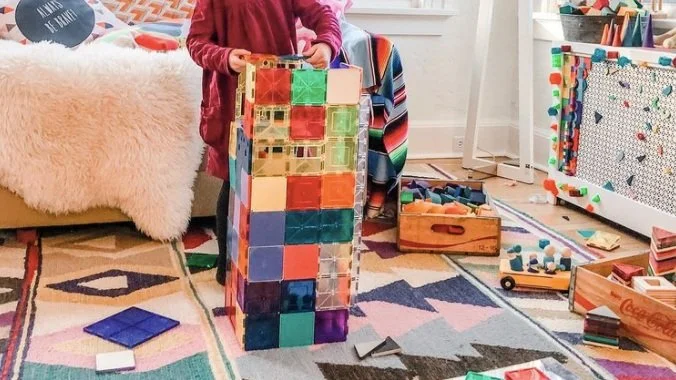


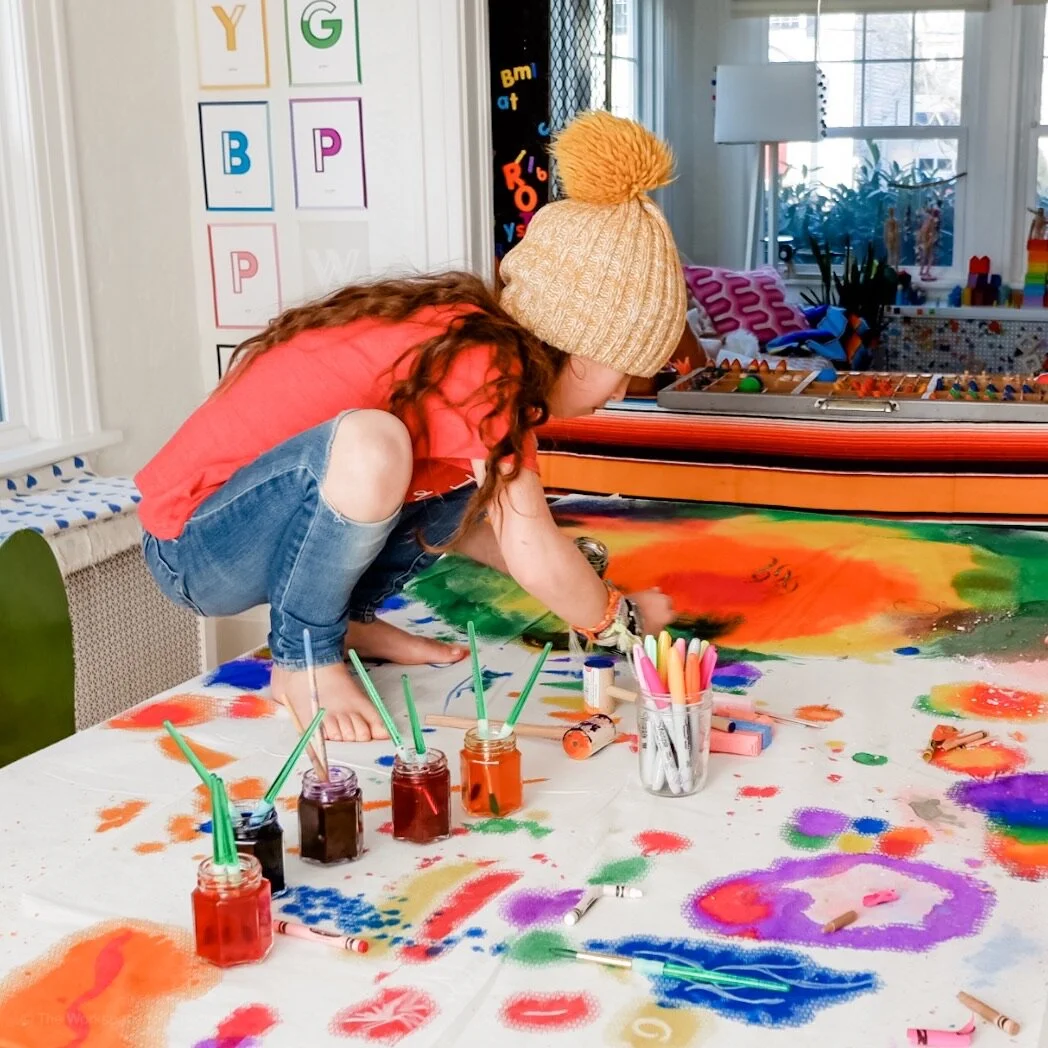









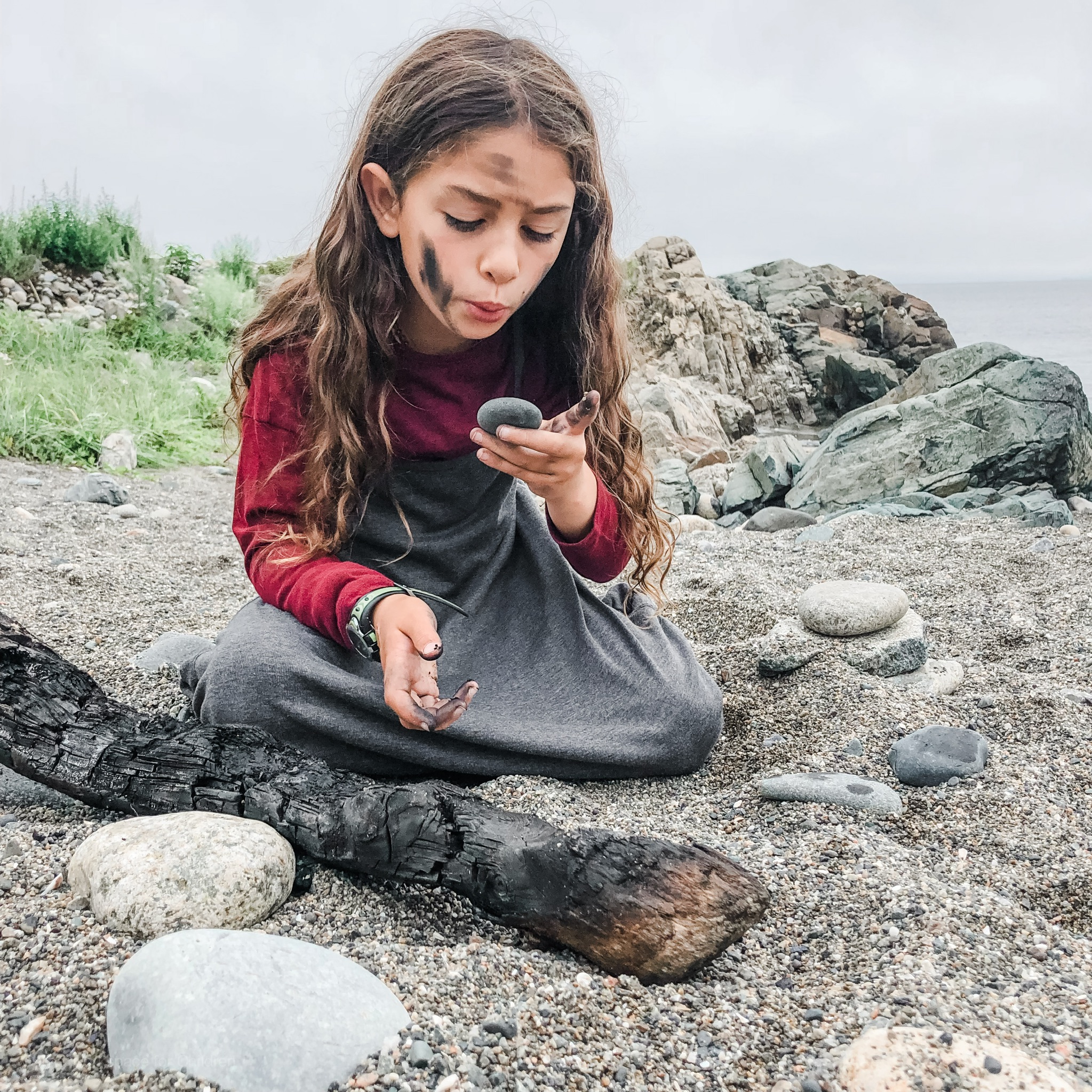


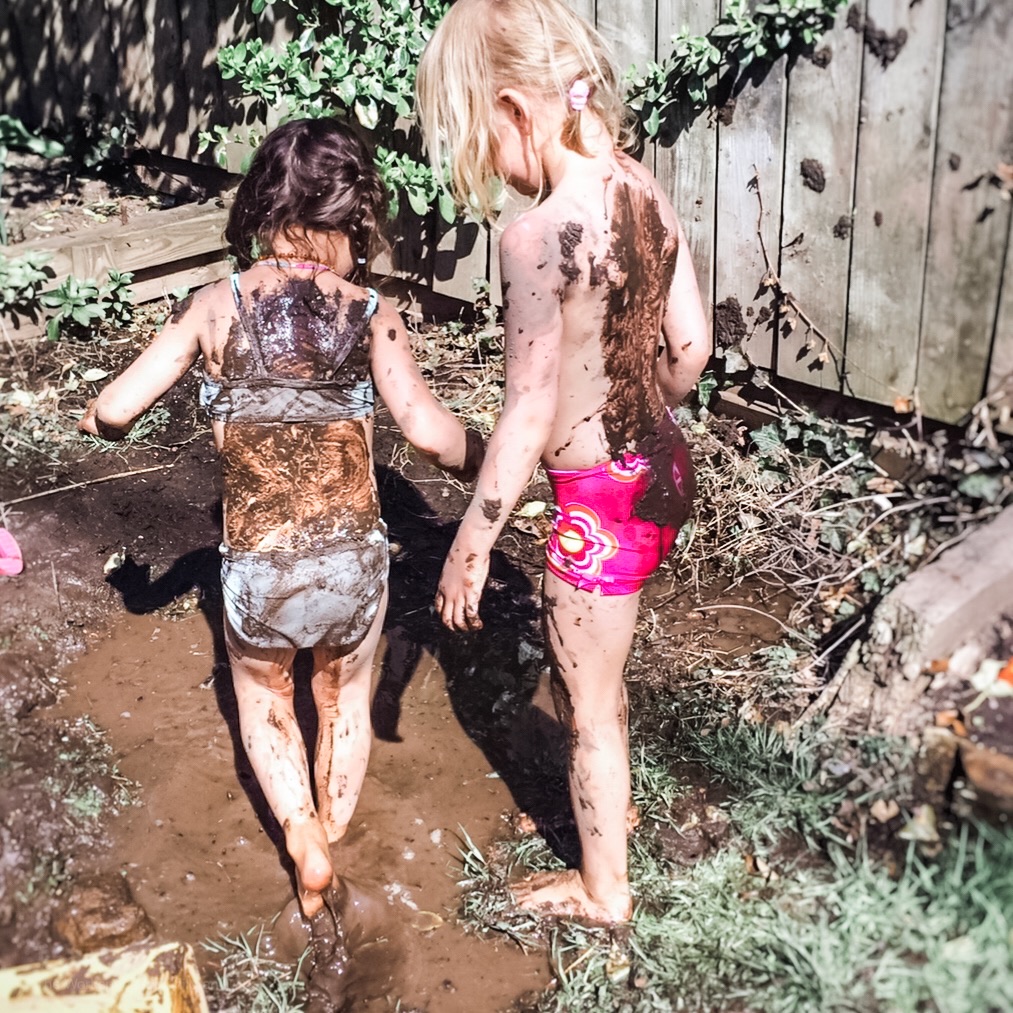
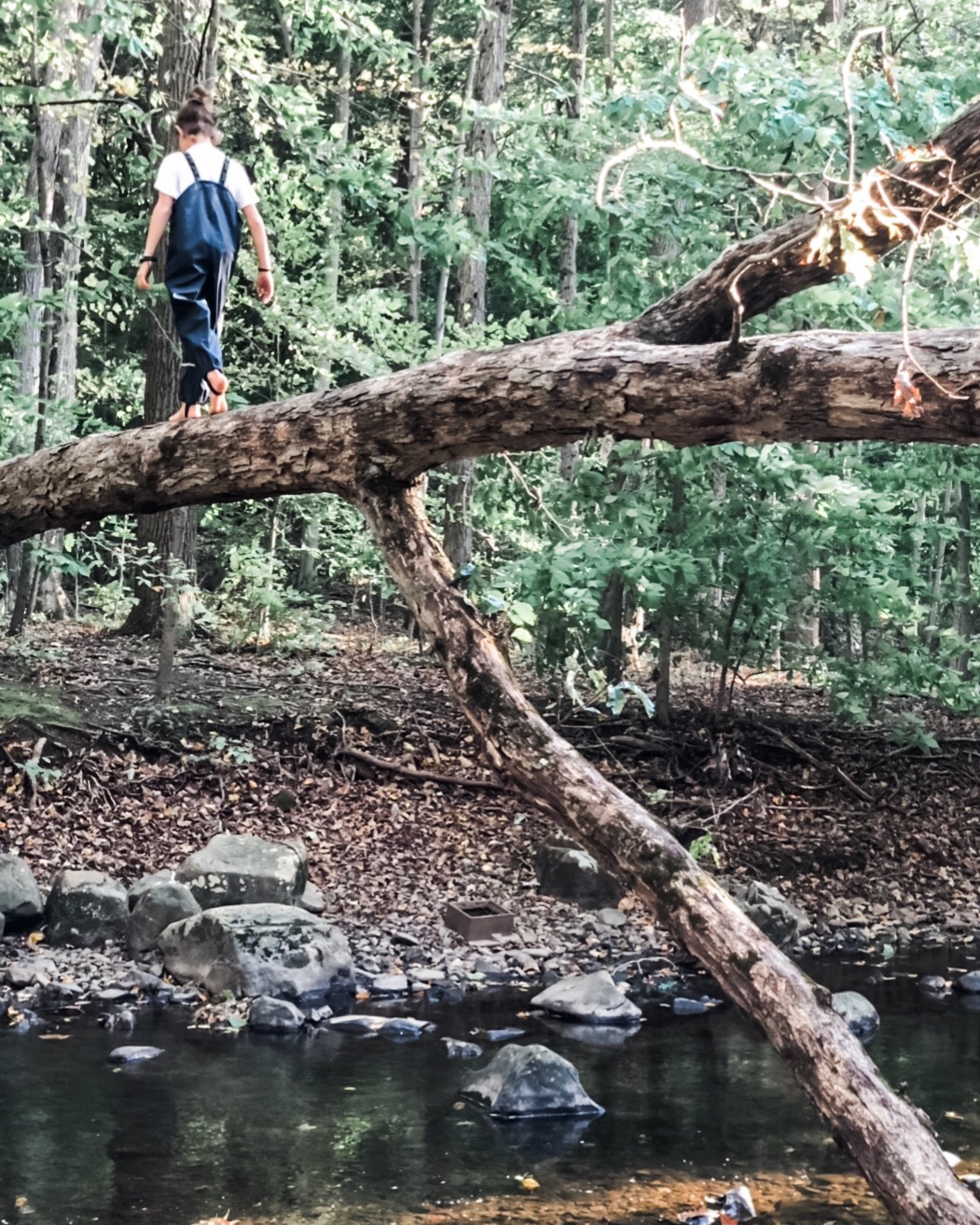
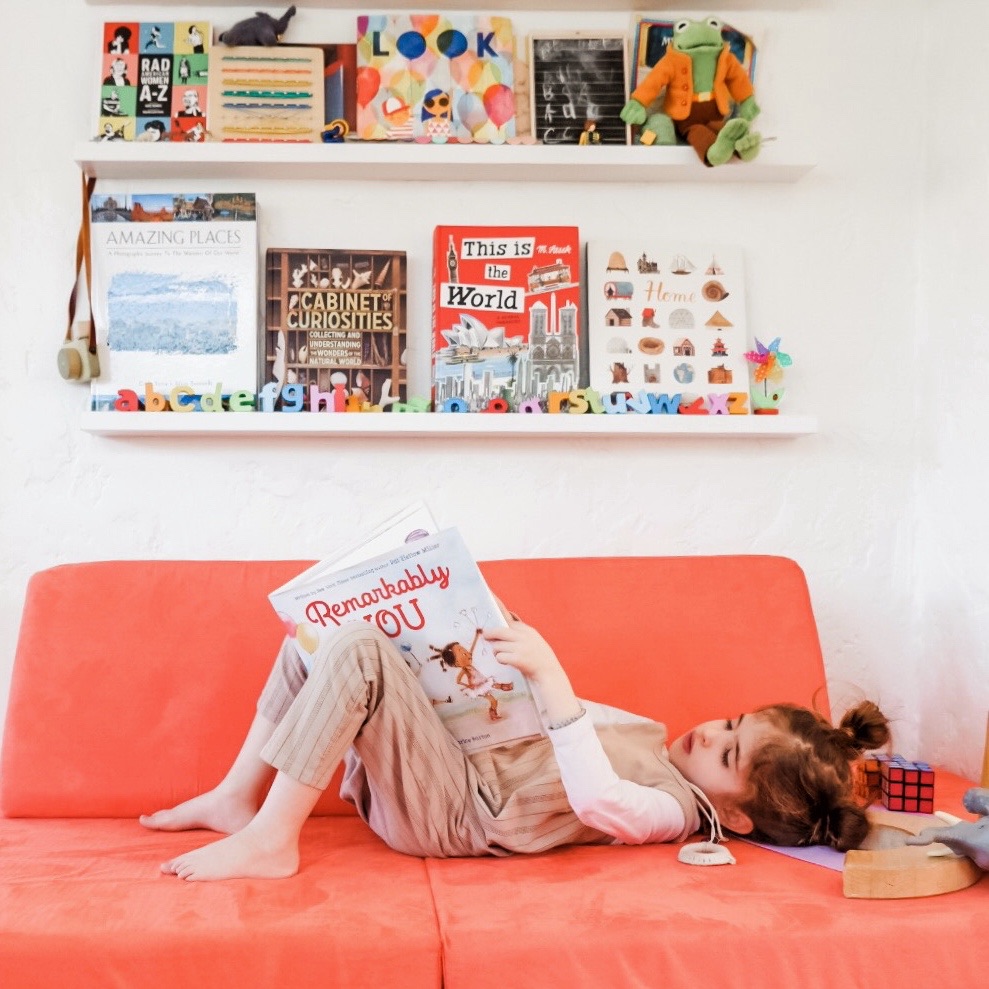

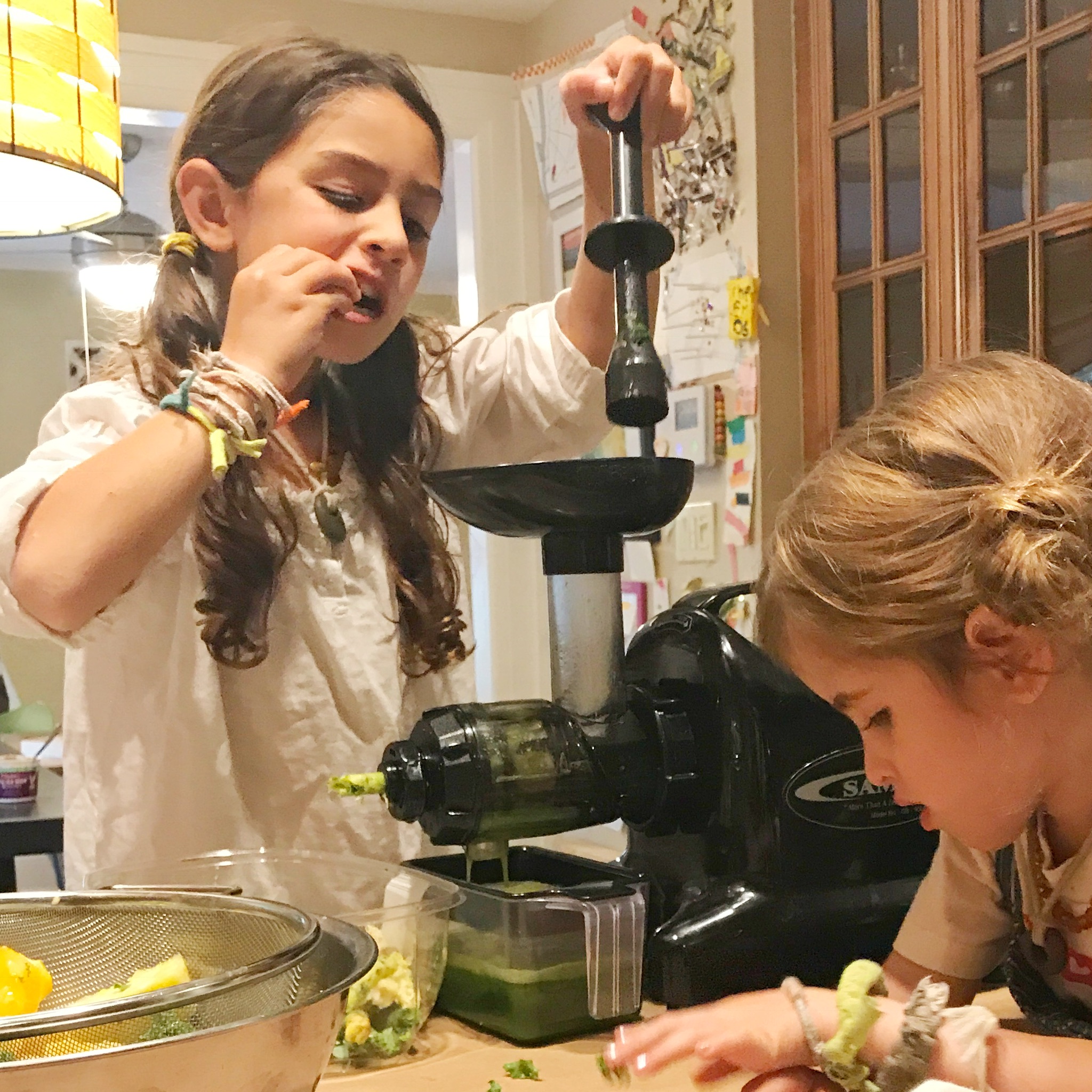


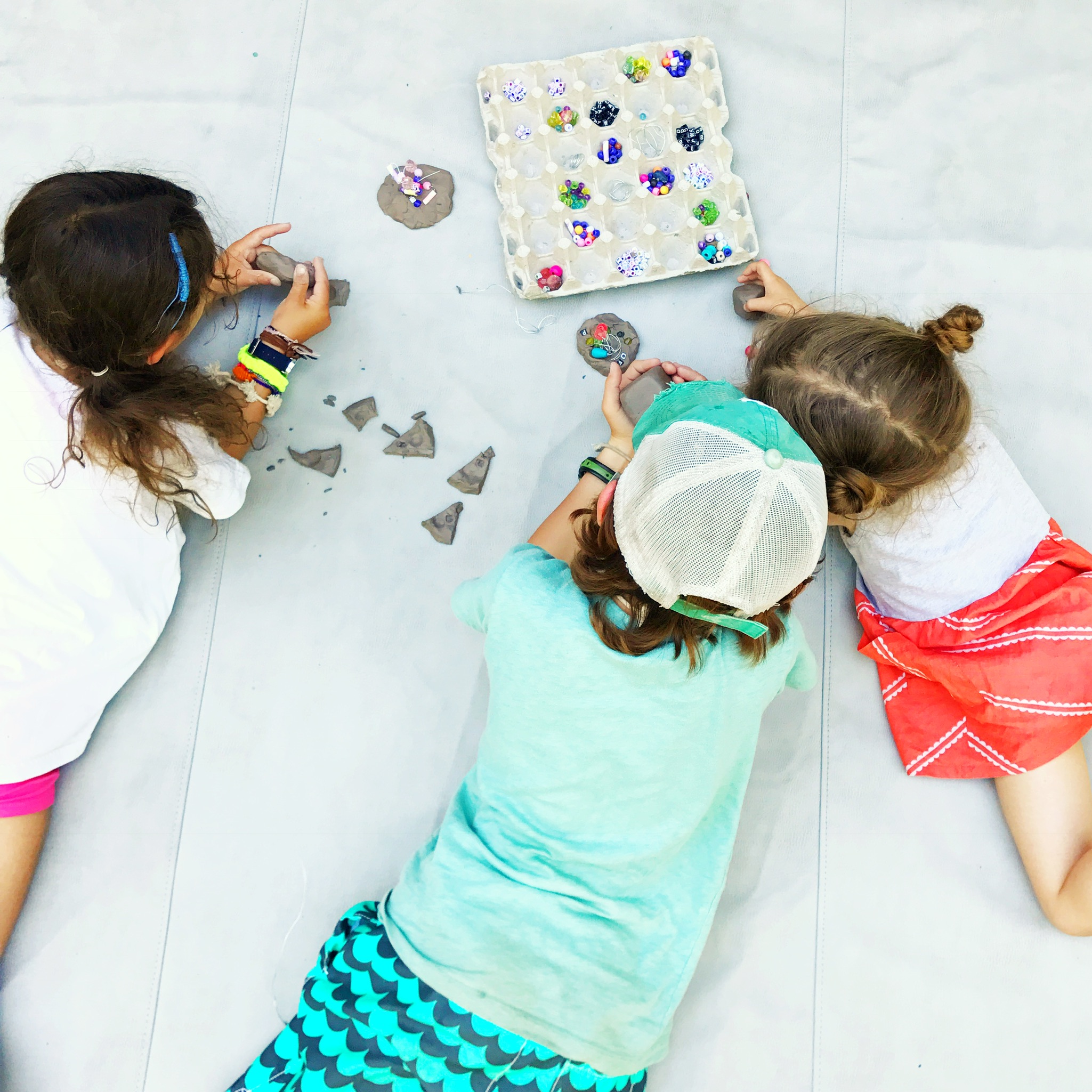


Rescuing them from discomfort also robs them of resilience.